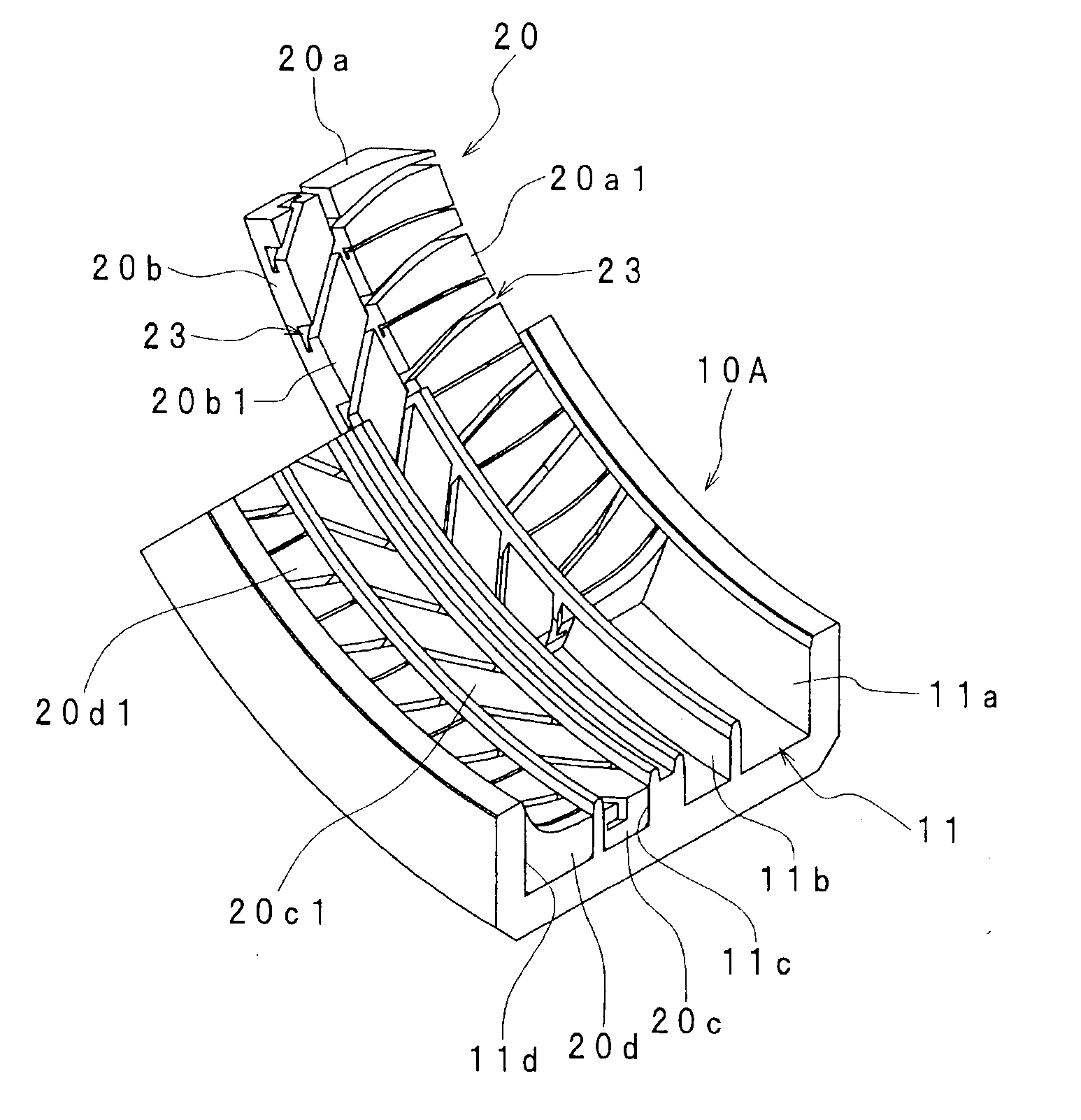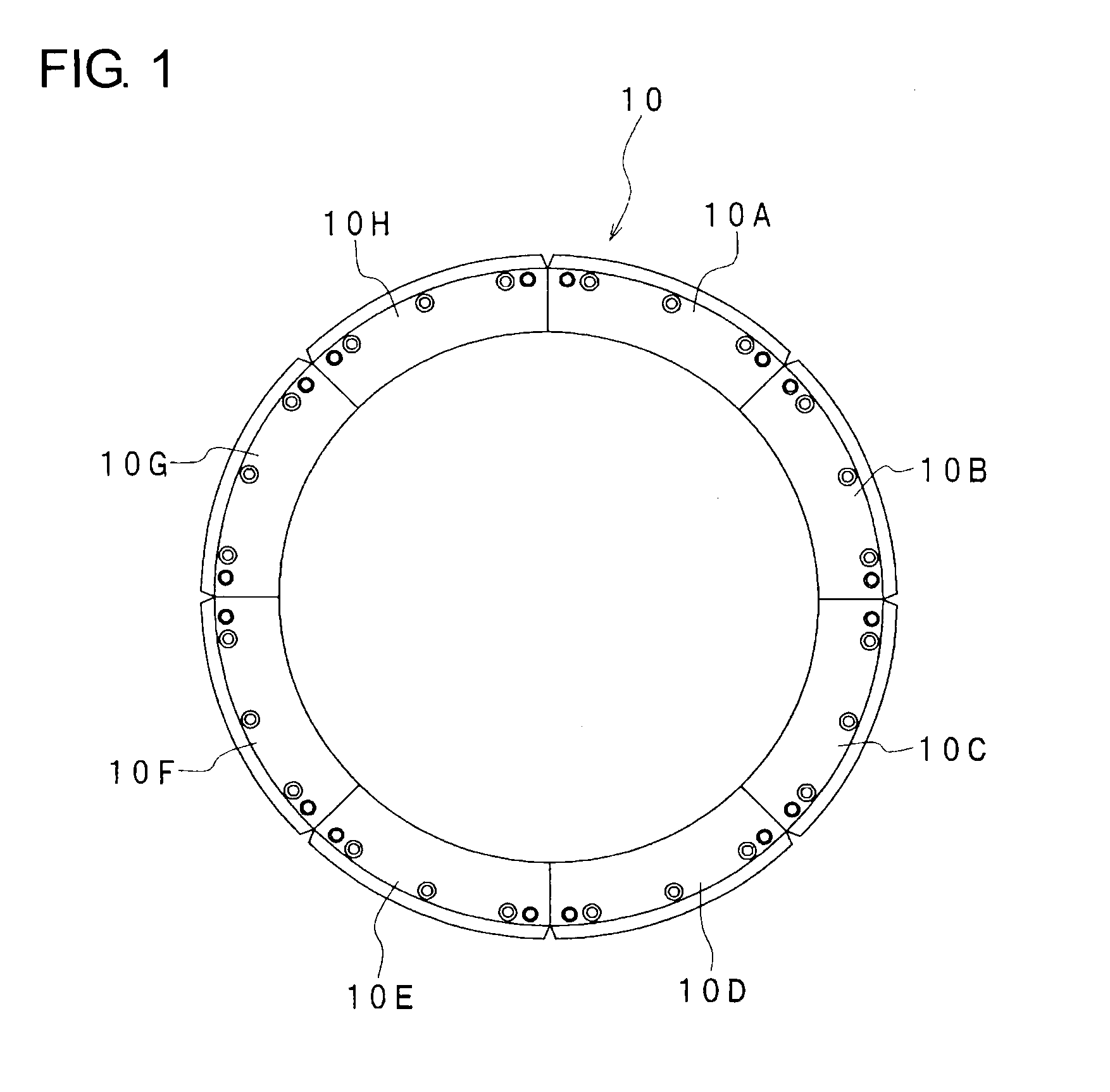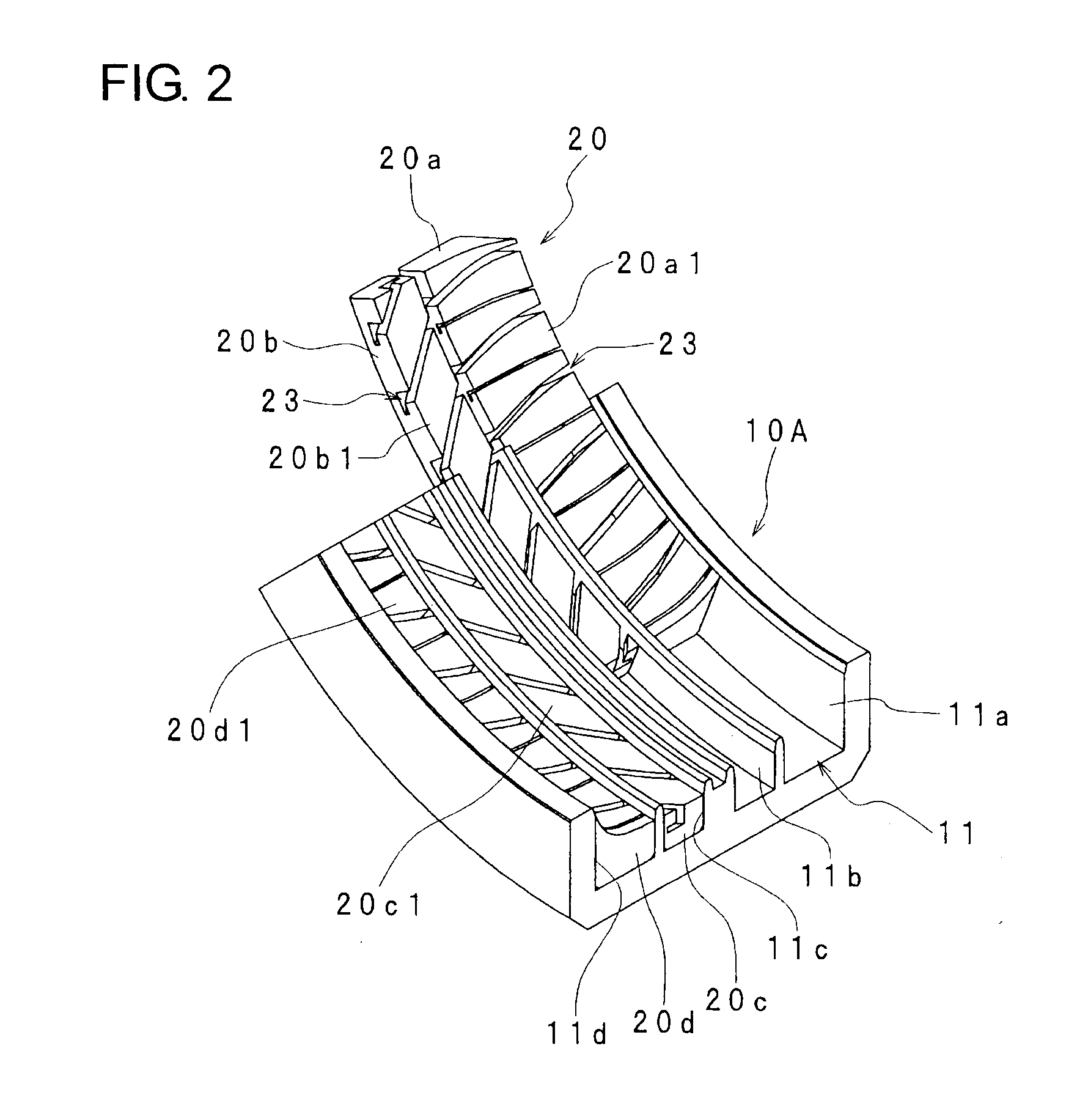Tire vulcanization forming mold
a technology of vulcanization and forming molds, which is applied in the field of vulcanization forming molds, can solve the problems of difficult cutting out, and achieve the effects of convenient manufacturing of segment molds, convenient replacement, and economical replacemen
- Summary
- Abstract
- Description
- Claims
- Application Information
AI Technical Summary
Benefits of technology
Problems solved by technology
Method used
Image
Examples
Embodiment Construction
[0032]Hereafter, a first embodiment of the present invention will be described with reference to the drawings. FIG. 1 shows a mold 10 for vulcanizing and forming a tire, and the mold 10 is composed of segment molds 10A-10H which are divided into, for example, eight segments in the circumferential direction for forming a tread surface of the tire (not shown). The respective segment molds 10A-10H are the same in construction, and therefore, the construction of the segment mold 10A will hereafter be described in detail.
[0033]As shown in FIGS. 2, 3 and 4, on an internal surface of the segment mold 10A, a plurality of circumferential grooves 11 are formed with spaces in the width direction (tire width direction). In the embodiment, one example is illustrated as a case that four circumferential grooves 11a, 11b, 11c, 11d are formed with spaces therebetween in the width direction. The segment mold 10A has partition walls 13a, 13b, 13c formed at respective places between the circumferential...
PUM
| Property | Measurement | Unit |
|---|---|---|
| stress | aaaaa | aaaaa |
| stress | aaaaa | aaaaa |
| width | aaaaa | aaaaa |
Abstract
Description
Claims
Application Information
 Login to View More
Login to View More - R&D
- Intellectual Property
- Life Sciences
- Materials
- Tech Scout
- Unparalleled Data Quality
- Higher Quality Content
- 60% Fewer Hallucinations
Browse by: Latest US Patents, China's latest patents, Technical Efficacy Thesaurus, Application Domain, Technology Topic, Popular Technical Reports.
© 2025 PatSnap. All rights reserved.Legal|Privacy policy|Modern Slavery Act Transparency Statement|Sitemap|About US| Contact US: help@patsnap.com



